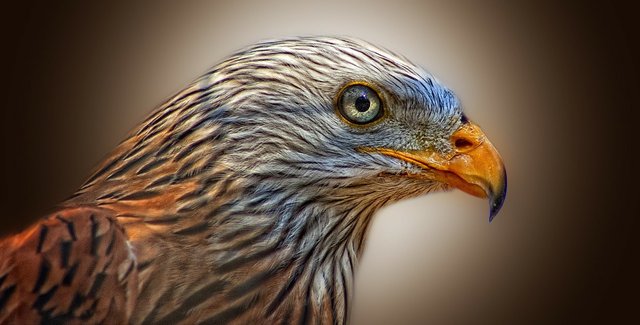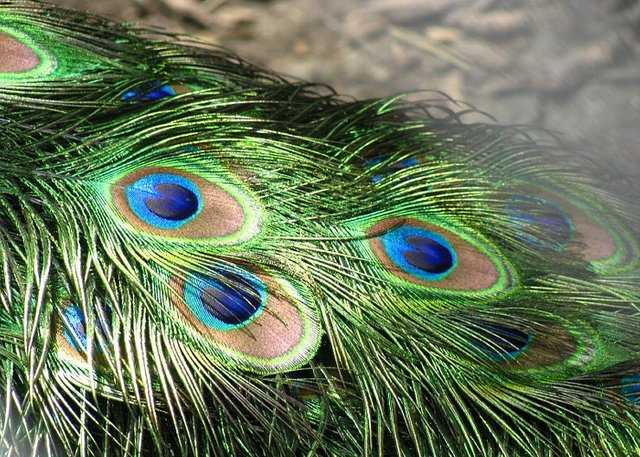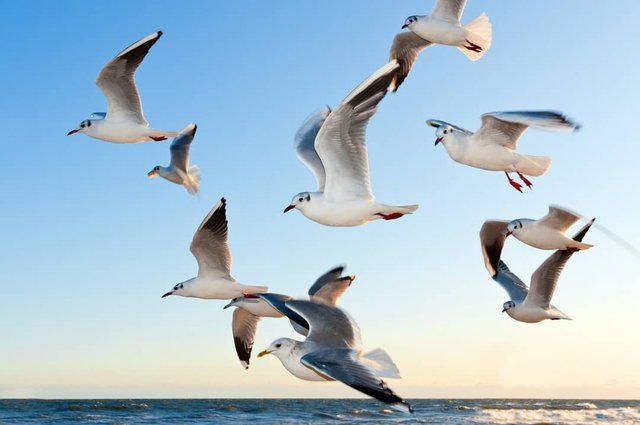The Science Behind Beautifully Coloured Feathers In Birds (Why Do Birds Have Coloured Feathers And How Did They Acquire it? — Part 2)
It's 5 days today since I dropped the Part 1 of this article. It certainly hasn't been easy for me writing @steemstem-based articles due to some reasons I prefer to keep to myself. Let me focus on the purpose of this article before digression takes over. That said, welcome to the concluding part of this article. In the Part 1, we learnt the real secrets and uses of the brightly coloured feathers in births. We noted that beautifully coloured feathers are important in mating; male birds tend to have more brightly coloured feathers in order to woo the females into copulation.
Female birds usually take care of the nest and their young; for this reason, they often have dull colours in order not to attract predators to the nest. Part 1 also noted that mating is not the only reason births have beautiful and colourful feathers. Other reasons include to maintain steady body temperature, to embark on flight away from dangers, to camouflage against predation, to display readiness to fight off an intruder, to differentiate and recognize their species and kinds, amongst others. In this Part 2, we will be looking at the feather colour determination. How do feathers acquire their colours? What are the elements of feather colours? All these and many more, if any, will form the theme of this article.
Bird feather colour determination: Understanding How colours in bird feathers formed
If you look at birds, you will see they have colour differences. While some are dark, others are red, and so on and so forth. The colours of feathers are formed in two ways, namely:
By pigmentation, and
By light refraction brought about by the structural orientation of bird feathers[1, 2, 4].
Additionally, in some birds, feather colours may be the result of a combination of pigmentation and structurally induced colouration.[1, 2, 4]. A good example of this, is the green colours of some parrots, which is said to be the product of yellow pigment overlapping the blue-reflecting characteristics of the feathers[1, 2]. Let us consider each of the highlighted methods —pigmentation and light refraction separately in a bit more details. Bird feathers are not the only place where pigments are found. They are also found in plants, human skin and most other animals too. Pigmentation-induced feathers maybe due to any of these three chemical compounds: melanins, carotenoids, and porphyrines[2, 4]. Melanins do not only confer colours on feathers but also resistance to wear and tear[2,3,4]. They are found as tiny granules[2] of colour in skin and feathers of the birds and are responsible for feather colours such as darkest black to reddish browns and pepper yellows[2,3,4]. Melanin-induced feathers are very strong while those with no pigmentation are the weakest feathers[2]. White wing feathers generally have their tips covered in black colours because those are the areas that are subject to wear and tear[2,4]. So melanins occur there to enable the hardest-working feathers to better resist the forces of wear and tear. The dark black of a crow or the brown stripes of an owl are all due to melanins[3]. This decades-old experiment confirms that melanin pigments in feathers improve their aerodynamics by 4 to 9 percent[3]. Another group of chemical compounds that are responsible for some feather colours in birds are called carotenoids. There exist over 600 types of carotenoids, and the process of photosynthesis is needed to make all of them[3], which is not possible with birds. For this reason, to produce carotenoids to impart their feather colours, birds must eat plants, a few types of bacteria or something that has eaten plants since they cannot produce carotenoids on their own[2,3,4]. Carotenoides are what give birds such feather colours as reds, oranges and yellows[3]. In some cases, carotenoids combine with melanins to give such colours as the olive-green of the female Scarlet Tanager[2]. The last group of pigments are known as the porphyrins. They are not found in many birds as compared to melanins and carotenoides; only a handful of bird feathers possess them[3]. Porphyrins are responsible for a range of feather colours such as pink, browns, reds, and greens[2]. They are produced by modifying amino acids, and even though they have varying chemical structures, they exhibit a common trait which is ability to fluoresce a bright red colour on exposure to ultraviolet light[2,4]. They are known to be present in the feathers of some owls, pigeons and gallinaceous species[2]. Two examples of porphyrins are turacin and psittacofulvin pigments[3]. In this case, instead of pigments, the interaction between the feather structures and light rays is what impart their colours. This is explained by the fact that the protein content of the feathers causes light rays to be refracted, thus conferring various colours on the feathers[2]. Structurally-induced feather colours can be iridescent feathers or non-iridescent feathers. Iridescently-coloured feathers are produced by the refraction of the incident light hitting the microscopic structure of the feather barbules which act like a kind of prism[2, 4]. Feathers are structured in such a way that they cause light to be twisted, turned and separated into a kind of a rainbow of iridescent colours which change as the viewing angle changes[2,3]. The gorget (throat feathers) of hummingbirds species are among the best known examples of Iridescently-coloured feathers. Other bird species like the Purple Gallinule and Tricolored Heron are also feathers which exhibit iridescent colours[2]. In this case, the structurally-induced colours are not iridescent[2]. The colours are due to tiny air pockets in some feather barbs that allow them to display only one colour at a time[3]. The blue coloured feathers are generally known to be produced in this manner. The blue feathers of bluebirds, Indigo Buntings, Blue Jays and Steller’s Jay's are among the best known examples of iridescent structural colours. There are many other amazing facts associated with colours of bird feathers that are sure to interest you and enrich your knowledge. You will get these other interesting facts by reading up the below provided references. Thanks for reading. [1] Why do birds have such beautiful and colorful feathers? Yours truly,Pigmentation-induced feather colours

pixabay CC0 image
Structurally-induced feather colours

[Brilliantly iridescent colours of peacock. Source: Wikimedia commons. Author: AlexDuarte. Public domain image]Iridescently-coloured feathers
Non-iridescently coloured feathers
References for further reading
[2] How birds make colorful feathers
[3] What makes bird feathers so colorfully fabulous?
[4] Bird feathers: why birds have colourful feathers
@eurogee


Join Euronation Community on Telegram and whatsapp through the below links to socialize with larger steemit community:

No Witnesses = No Steem Blockchain; If You Truly Love Here, Vote For Witnesses NOW!
Click This Link To Vote Now



Hi @eurogee, I'm @checky ! While checking the mentions made in this post I noticed that @steemstem-based doesn't exist on Steem. Maybe you made a typo ?
If you found this comment useful, consider upvoting it to help keep this bot running. You can see a list of all available commands by replying with
!help.Excellent article! Non-pigmentation based color is extremely important if we are going to find ways to create color without pollutants. Thank you for bringing it to the foreground. You can also use the #biomimicry tag for this, since it is a biological component that is often mimicked.
Thanks for the feadback and tag suggestion.
Thank you so much for this post! I really enjoyed it and have included it in the third episode of Biomimicry Inspirations.